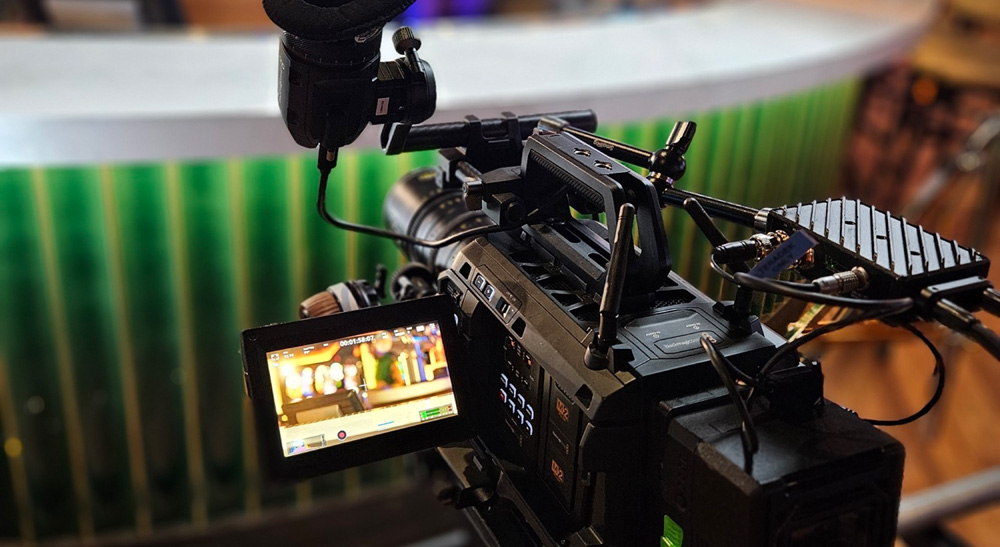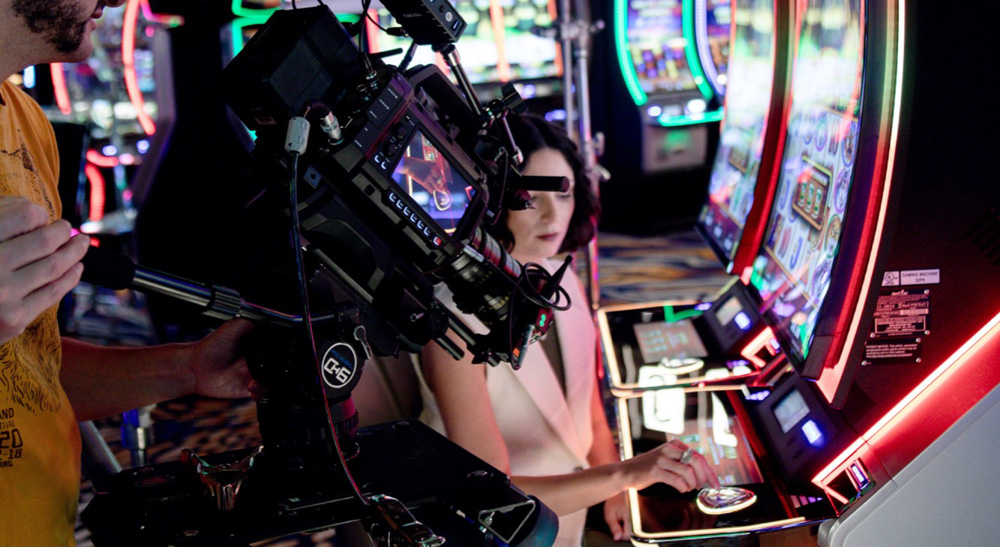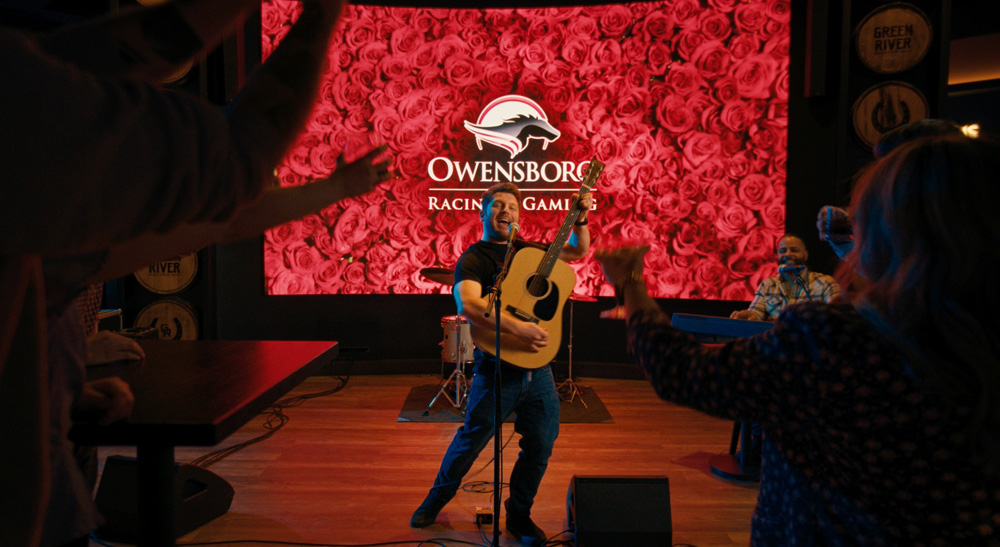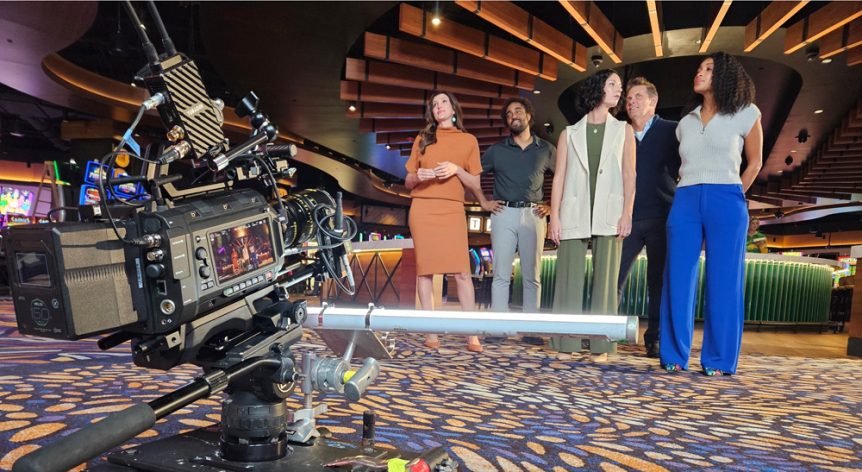Cinematographer and colorist enjoy color quality, flexible resolution in capturing fast paced commercial.
Fremont, CA, USA - Blackmagic Design today announced that cinematographer Jackson Cooper Gango recently shot several commercials for Owensboro Racing and Gaming using the Blackmagic URSA Cine 12K LF digital film camera and DaVinci Resolve Studio editing, color grading, visual effects (VFX) and audio post production software.
Gango was contacted by frequent collaborator Tim Connery of DreamCatcher Studios to produce a series of commercials for Owensboro Racing and Gaming in Kentucky, a gaming and entertainment complex. “The client wanted their property to look exciting and inviting to both a younger crowd, while still advertising to the usual adult crowd,” said Gango.
Having shot a number of similar projects around the country, Gango was well aware the project was more than just shooting people having fun. “The clients we work with are always very picky on how their machines look in the finished spot. A game that is too blown out or saturated in the wrong way can immediately affect whether we were successful in capturing the client’s most important product. They also always want their property to feel special, even though a lot of these locations are very similar in terms of games and layout,” he explained.

The heavily saturated colors and bright lights that are typically found in and around gaming machines can be a significant challenge when shooting and often problematic for some camera systems.
“There were two major things I was concerned about that have been an issue with our gaming spots in the past,” continued Gango. “There are certain kinds of saturated blues that I usually have to either control or stay away from when using other cameras. There are also a lot of saturated colors on the gaming floor, and they get super saturated so quickly that I can very easily lose them, which leads to more work for the colorist. But with the URSA Cine 12K LF we were able to contain those colors, and using Blackmagic RAW, we could retain them through post.”
The project also called for segments of high speed cinematography and included fast movements, which are always concerning with certain cameras. “We shoot a lot of moments at higher frame rates, so you have to sacrifice resolution, sensor size or capture area on other cameras, but not here with the 12K LF. Just being able to shift resolutions to increase frame rate, without affecting crop factor on the lens, is amazing. And personally speaking, I'm a huge stickler when it comes to rolling shutter. The URSA Cine 12K LF performed amazingly. If you drop down to 8K or 4K resolution the read rate gets even better. Honestly at 4K resolution, it's the best I've ever seen,” said Gango.

Colorist Ryan McNeal was excited about working with the URSA Cine 12K LF as well and noted, “There were two technical hurdles that we were excited to see how the new sensor handled,” said McNeal. “Locations like this are lit for human vision and are meant to be moody, so we knew there would be a lot of blacks and darker shadows in the frame. With such a large floor space, much of the background would have to be lit only with available light. With other cameras, this would stress the sensor for both exposure and noise. A second technical hurdle was the unavoidable presence of super saturated practical sources in the frame. All the slot machines and dynamic lighting are extreme RGB lighting, far outside the BT.709 color space that we would be finishing to.”
In the end, URSA Cine 12K LF performed well. “The imagery was remarkably clean instead of the expected noise and exposure limitations in these situations,” continued McNeal. “I did not need to clean up the camera noise at all. Even on much more commonly used cinema cameras I almost always clean up at least chroma noise, even on well exposed shots.”
While the advanced sensor handled saturation extremely well, even the best cameras can’t always handle super saturation, but McNeal, a veteran DaVinci Resolve Studio colorist, knew he had the tools necessary to solve the problem.
“After getting mixed results with basic tools, I took some time to look through the Camera RAW settings in my DaVinci Resolve project and noticed the Gamut Compression checkbox. We ticked that, and it instantly improved the saturation roll off. We then combined it with a Gamut Mapping OFX and set the Gamut Mapping Method to Saturation Compression, adjusting the Knee and Max values to put the most extreme hues safely in the vectorscope bounds. Any super saturation issues were solved.”

